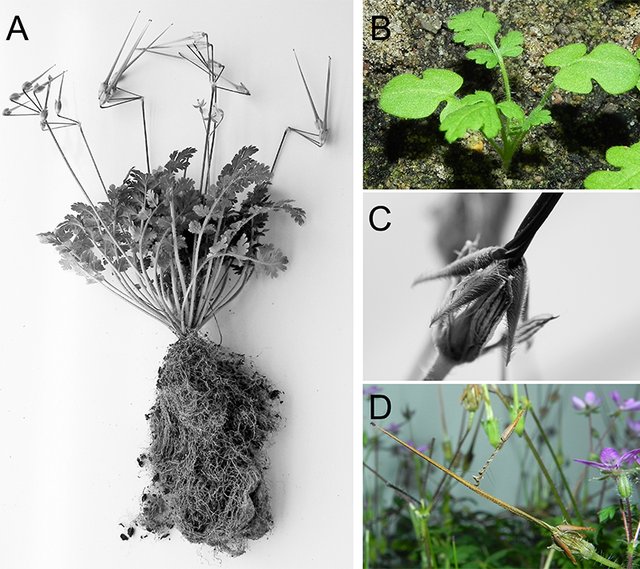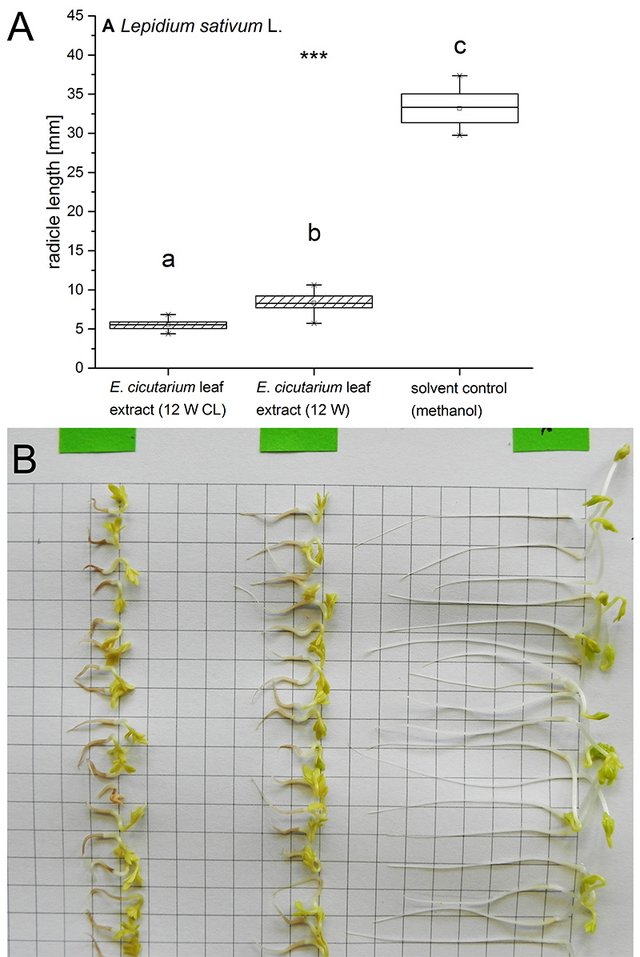The common stork´s-bill Erodium cicutarium (Geraniaceae) is an annual herb with global distribution and high competitive ability, allowing it to become a dominant invasive plant in North America. E. cicutarium causes high yield losses in several crops: up to -92 % in peas, -82 % in dry beans, -37 % in canola and -36 % in wheat. Further ecological detrimental effects of invading E. cicutarium have been described. Until now, the underlying chemo-ecological mechanism for the success is largely unknown.
The objective of the present study was to evaluate possible allelopathic effects. Therefore, the impact of E. cicutarium rhizosphere soil from the climate chamber and field grown plants, as well as leaf extracts from plants of different life stages and subjected to simulated mowing on crop plant seedlings were examined. The samples with the highest allelopathic activity (methanolic leaf extracts of twelve-weeks-old climate chamber grown plants subjected to simulated mowing) were more thoroughly investigated by a solid phase extraction and high-performance liquid chromatography. Subsequently, bioassays with separated fractions and pure natural chemicals which had been identified confirmed the allelopathic potential of some phenolic compounds. Ellagic acid, for example, causes a significant growth inhibition at 15.6 µg / mL and gallic acid at 31.3 µg / mL.
Interestingly, raw extracts provoked the highest relative growth inhibition. Probably different allelochemicals work synergistically. Potentially the use of raw extracts for analyzing the effects of allelochemicals could better simulate ecological reality than (isolated) pure compounds. The investigation of allelopathy is relevant for agriculture, crop rotation and nature conservation.
___
Jan Hendrik Hoerner conducted this work at the Department of Chemical Ecology in the working group of Prof. Dr. Caroline Müller.


